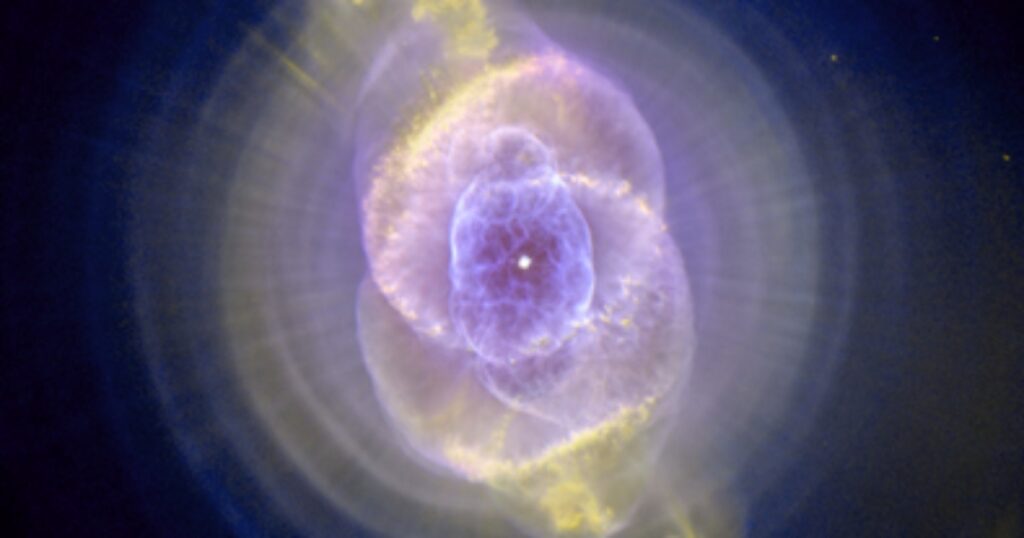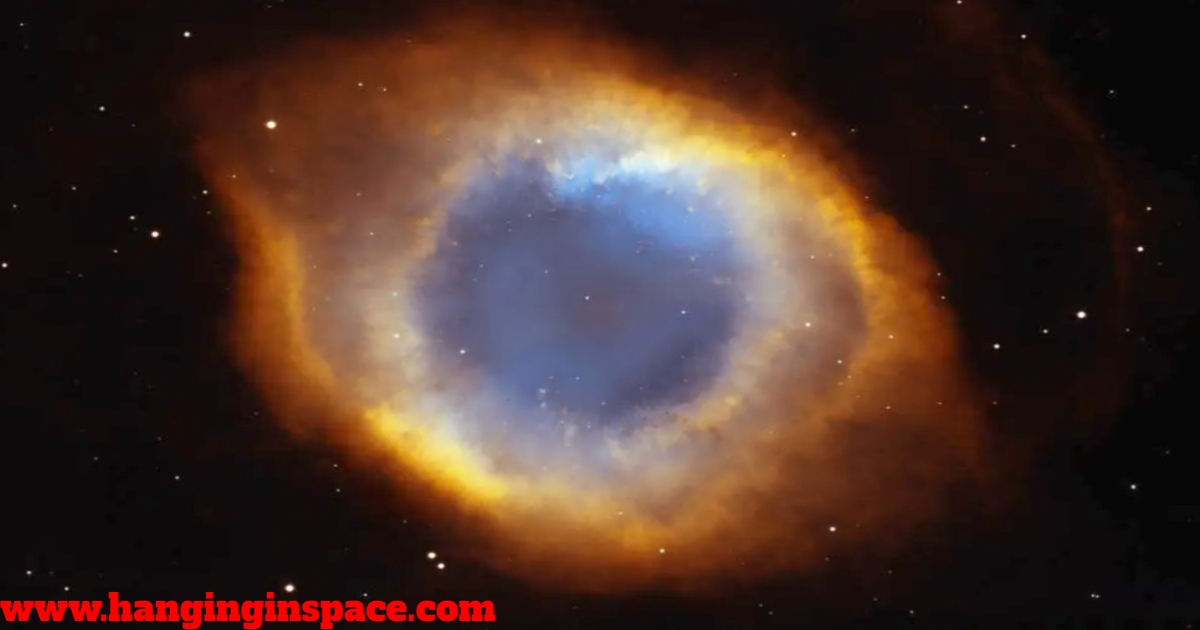Planetary nebulae are luminous emission nebulae consisting of expanding shells of gas and dust ejected from dying stars during the late stages of their evolution. Despite its name Planetary Nebula, it has no relation to planets.
Planetary nebulae are formed when a star, similar in mass to our Sun, sheds its outer layers in a beautiful and intricate display, leaving behind a hot, compact core known as a white dwarf.

How do Planetary Nebulae Form?
Planetary Nebulae are formed from the ejected shells of dying Sun-like stars.
How Long Planetary Nebulae Last?
Planetary nebulae are an extremely short-lived component of the star life cycle, with a lifespan of just 20,000 years or less.
What is the Composition of Planetary Nebulae?
Planetary Nebulae are primarily composed of hydrogen and helium gas, with some heavier elements mixed in.
What is the Size of Planetary Nebulae?
Planetary Nebulae can range from about 0.1 to 1 light-year in diameter.
What is the Lifespan of Planetary Nebulae?
Planetary Nebulae only last for a few tens of thousands of years, which is a very short time compared to the billions of years that a star spends on the main sequence.
What is the shape of Planetary Nebulae?
Planetary Nebulae can come in a variety of shapes, including spheres, bipolar lobes, and rings.
Formation of Planetary Nebulae:
The genesis of a planetary nebula begins with the twilight years of a star’s life, typically a star similar in mass to our Sun. As these stars exhaust their nuclear fuel, they undergo a dramatic transformation, swelling into red giants and shedding their outer layers in a series of stellar winds.
Eventually, the star’s core, now a hot, dense remnant known as a white dwarf, illuminates the surrounding gas and dust, giving rise to the luminous spectacle of a planetary nebula.

What are the Characteristics of Planetary Nebulae?
Planetary nebulae exhibit a diverse array of shapes and structures, from spherical shells to intricate spirals and bipolar jets. These nebulae are composed of ionized gas and dust, energized by the intense ultraviolet radiation emitted by the central white dwarf.
The colors of planetary nebulae are determined by the elements present in their composition, with hydrogen-rich nebulae appearing pink or red, and oxygen-rich nebulae displaying hues of blue and green.
What is the Significance of Planetary Nebulae?
Planetary nebulae play a vital role in the cosmic cycle of stellar evolution and enrichment. As the outer layers of dying stars are expelled into space, they enrich the interstellar medium with heavy elements synthesized in the star’s core, including carbon, nitrogen, oxygen, and beyond.

What are the Types of Planetary Nebulae?
While planetary nebulae share the common origin story of being the cast-off shells of dying Sun-like stars, they exhibit a surprising diversity in their shapes. This variety arises from the complex interplay between the properties of the dying star and the processes that expel its outer layers. Here’s a peek into the fascinating types of planetary nebulae:
Elliptical Planetary Nebulae:
These are the most common type of planetary nebula, appearing roughly spherical or elliptical in shape. The ejected shell of gas and dust expands outward relatively uniformly, resulting in a somewhat symmetrical form. The Ring Nebula (M57) is a classic example, showcasing a near-perfect ring due to a specific alignment of the ejected material.
Bipolar Planetary Nebulae:
These nebulae have a distinct bipolar structure, resembling two lobes extending outwards from a central star. The expelled material isn’t spherically symmetrical but shows a preference for ejection along the poles of the star.
This asymmetry might be caused by the presence of a binary companion star or a strong magnetic field shaping the outflow. The Butterfly Nebula (NGC 6302) is a famous example, with its striking resemblance to a butterfly’s wings.
Multipolar Planetary Nebulae:
These less common nebulae exhibit more complex shapes with multiple lobes or outflows. The intricate sculpting of the ejected material could be due to the interaction of a strong stellar wind with the surrounding gas or a rapidly rotating central star.
The Red Rectangle Nebula (NGC 1535) is an example, showcasing a rectangular shape with additional knots and filaments.
Prolate Elliptical Planetary Nebulae:
These nebulae are elongated ellipsoids, appearing stretched along a single axis. The specific cause of this elongation isn’t fully understood, but it could be related to the interaction of the ejected material with a disk of gas and dust surrounding the central star. Hen 3-1331 is an example of a prolate elliptical planetary nebula.
Ring-like Planetary Nebulae:
While Elliptical Planetary Nebulae might appear somewhat ring-like due to our viewing angle, Ring-like Planetary Nebulae have a much more pronounced, well-defined ring structure. This specific shape could arise from a disk of gas and dust around the central star that confines the ejected material, shaping it into a thin ring. The Southern Ring Nebula (NGC 3242) is a beautiful example.
What are the Examples of Planetary Nebulae?
The Ring Nebula (M57):
The Ring Nebula is one of the most famous and well-studied planetary nebulae. It is located in the constellation Lyra and has a nearly perfect ring-shaped appearance.
The Helix Nebula (NGC 7293):
The Helix Nebula is another well-known planetary nebula, located in the constellation Aquarius. It has a beautiful, eye-like appearance.
The Cat’s Eye Nebula (NGC 6543):
The Cat’s Eye Nebula is a planetary nebula, located in the constellation Draco and has a complex structure, with a bright central star surrounded by a series of lobes and knots of gas.
The Jewel Bug Nebula (NGC 7027):
The Jewel Bug Nebula (NGC 7027) is a planetary nebula, that resides approximately 3,000 light-years from Earth in the constellation Cygnus. It is the smallest nebula ever discovered with an estimated size of roughly 0.2 light-years across.
Read also: 30 Most Famous Nebulae in the Universe
Conclusion:
In conclusion, planetary nebulae are cosmic masterpieces that illuminate the celestial canvas with their radiant beauty. They enhance the beauty of the universe.
